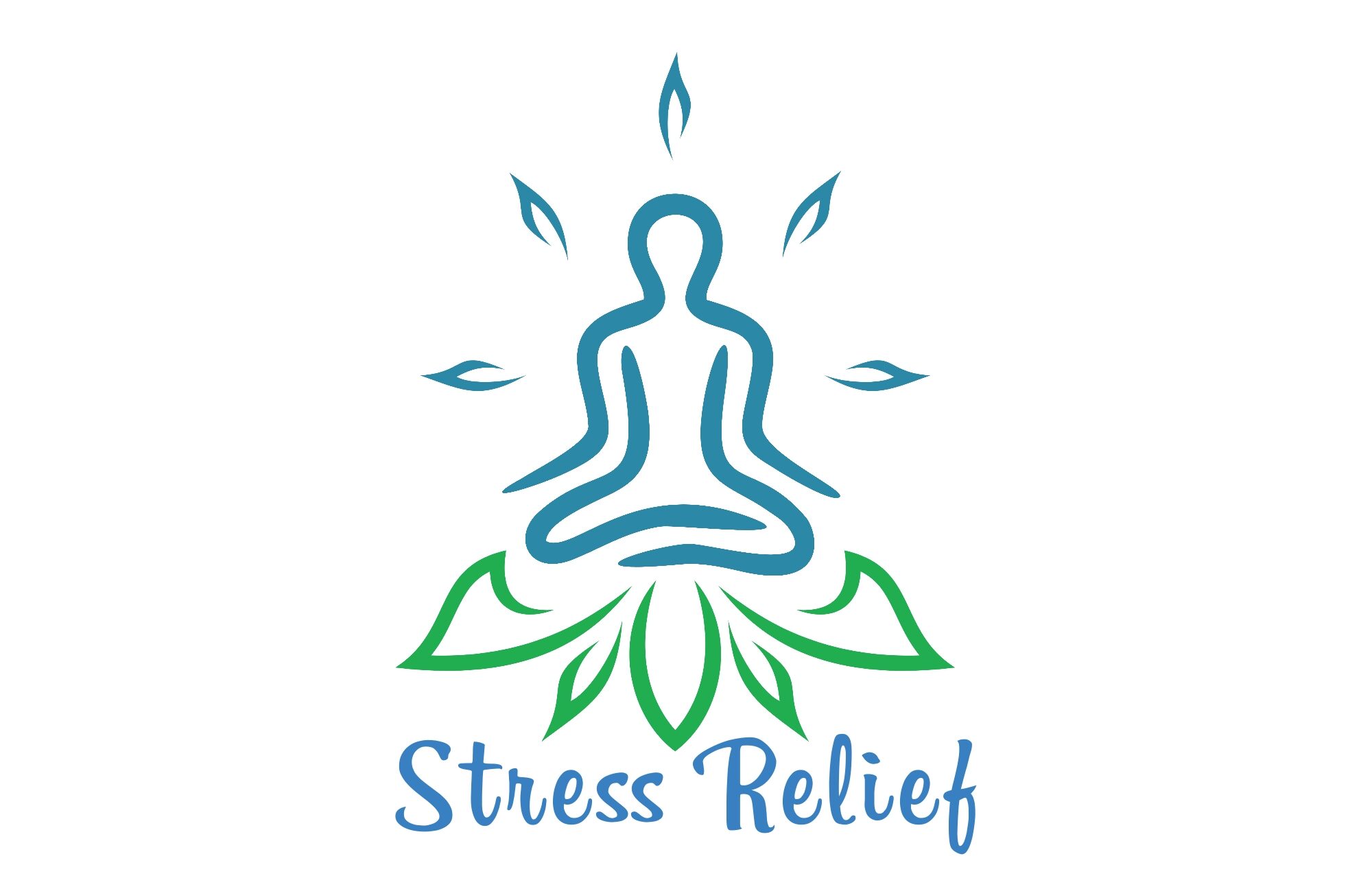Introduction
Nature has an incredible way of soothing our minds and bodies, providing a much-needed escape from the hustle and bustle of everyday life. One of the simplest yet most effective methods to combat stress is through nature walks. These outdoor exercises not only offer physical benefits but also provide a refreshing mental break. In this article, we will explore the how-tos and benefits of outdoor exercises for stress relief incorporating nature walks into your routine.

I. Understanding the Connection between Nature and Stress Relief
A. The Calming Influence of Natural Surroundings
Nature has a profound ability to soothe our minds and bodies, providing a much-needed respite from the stresses of modern life. Immersing ourselves in natural environments can have a remarkable impact on reducing stress levels.
1. Immersion in Natural Environments: A Natural Stress Reducer
When we surround ourselves with the beauty of nature, it has a calming effect on our senses. The gentle rustle of leaves, the scent of flowers in the air, and the soft sunlight filtering through the trees all work together to create a serene atmosphere. Being in nature allows us to escape the noise and chaos of everyday life, helping us find solace and inner peace.
2. Restoring Mental Fatigue: The Role of Nature in Cognitive Restoration
Studies have shown that spending time in nature can help restore mental fatigue. Our brains are constantly processing information and making decisions, which can lead to mental exhaustion and decreased cognitive function. However, when we immerse ourselves in natural surroundings, our minds have an opportunity to rest and recharge, improving our ability to focus and think clearly.

3. Nature as a Stress Moderator: Impact on the Body’s Psychological Response
Nature has the power to modulate our body’s physiological and psychological response to stress. When we are surrounded by nature, our heart rate decreases, our blood pressure lowers, and our levels of the stress hormone cortisol decrease. The tranquility and beauty of natural environments trigger a relaxation response in our bodies, providing relief from the physical and mental symptoms of stress.
B. The Therapeutic Effects of Outdoor Exercises
Nature not only serves as a calming backdrop, but it also provides the perfect setting for physical activities that can help alleviate stress. Engaging in outdoor exercises not only strengthens our bodies but also enhances our mood and overall well-being.
1. Physical Activity in Nature: An Effective Stress-Buster
Exercising in nature amplifies the benefits of physical activity. Whether it’s going for a brisk walk, hiking, or cycling, engaging in outdoor exercises allows us to reap the benefits of both the exercise itself and the natural environment. The fresh air, sunlight, and natural surroundings stimulate the release of endorphins, our body’s natural mood-enhancing hormones, leaving us feeling revitalized and stress-free.
2. Enhancing Mood and Well-being: The Link between Exercise and Stress Reduction
Numerous studies have shown that exercise has a significant impact on our mood and overall well-being. When we exercise, our brain releases chemicals called neurotransmitters, such as serotonin and dopamine, which are responsible for feelings of happiness and contentment. The combination of outdoor exercise and the beauty of nature creates a powerful synergy that further boosts our mood and reduces stress.

3. Exercising Outdoors: Benefits for Mental Health and Reducing Anxiety
Exercising outdoors has been shown to have a positive impact on mental health, reducing symptoms of anxiety and depression. The serene and peaceful environment of nature helps to calm our minds, providing a much-needed escape from the pressures and worries of daily life. Engaging in outdoor exercises allows us to connect with the present moment, promoting mindfulness and reducing the negative thought patterns that contribute to stress and anxiety.
II. Selecting the Ideal Nature Walks for Stress Relief
When it comes to nature walks, there is an array of options to choose from, each offering its own unique benefits for stress relief. Whether you prefer tranquil trails and serene pathways, urban escapes, or exploring the wilderness, there is a nature walk suited to everyone’s preferences and needs.
A. Tranquil Trails and Serene Pathways
1. Exploring Forest Trails: The Bliss of Green Spaces
Walking through lush forest trails immerses us in the rejuvenating power of green spaces. The dense canopy overhead filters the sunlight, casting a peaceful glow over the surroundings. The scent of pine and earth fills the air, relaxing both the mind and body. Forest walks offer a chance to reconnect with nature, providing a sanctuary away from the noise and distractions of urban life.
2. Enchanting River Walks: Finding Serenity Near Water Bodies
The calming sound of flowing water and the gentle caress of a cool breeze make river walks a popular choice for stress relief. Walking alongside a river or stream adds an element of serenity to the experience, as the rhythmic flow of water creates a soothing ambiance. The reflective surface of the water mirrors the tranquility within us, helping to wash away stress and promote a sense of inner calm.

3. Coastal Strolls: Harnessing the Power of the Ocean
The vastness of the ocean has a mesmerizing effect, capturing our attention and drawing us closer to its shores. Coastal strolls offer a unique opportunity to experience the healing power of the ocean. The sound of crashing waves, the salty scent of sea breeze, and the panoramic views of the horizon all work together to create a sense of awe and tranquility. Walking along the coastline allows us to release our worries and immerse ourselves in the vastness of the world around us.
B. Urban Escapes for Stress Relief
Not everyone has easy access to natural landscapes, but that doesn’t mean urban dwellers have to miss out on the benefits of nature walks. Urban areas offer their own pockets of tranquility, where nature can be found amidst the concrete jungle.
1. Urban Parks: Finding Nature Amidst the Concrete Jungle
Urban parks provide a welcome respite from the hustle and bustle of city life. These green oases offer a sanctuary where we can reconnect with nature, even in the midst of skyscrapers and traffic. Walking through urban parks allows us to enjoy the beauty of trees, flowers, and wildlife, while also benefiting from the physical activity and stress-relieving effects of nature.
2. Community Gardens: Connecting with Nature and People
Community gardens are not just places to grow plants; they are also spaces for connecting with nature and like-minded individuals. These vibrant and communal spaces allow us to engage in gardening activities while enjoying the therapeutic benefits of being outdoors. Working with soil, nurturing plants, and watching them grow can be a meditative and calming experience, providing a sense of purpose and connection to the natural world.
3. Rooftop Gardens: Elevating Outdoor Experiences in the City
Rooftop gardens have become increasingly popular in urban areas, serving as peaceful havens high above the city streets. These elevated green spaces offer magnificent views, fresh air, and a sense of escape from the urban chaos below. Walking through rooftop gardens provides an opportunity to unwind, recharge, and appreciate the harmonious relationship between nature and the cityscape.
C. Exploring Wilderness for Wilderness’ Sake
For those seeking a more adventurous and immersive nature walk, exploring wilderness areas offers a plethora of opportunities to connect with nature at its rawest and most untouched.
1. Hiking through Untamed Landscapes: Getting Lost in Nature
Hiking through untamed landscapes allows us to disconnect from the modern world and immerse ourselves in nature in its purest form. As we navigate through rugged terrains, climb mountains, and traverse dense forests, our minds and bodies sync with the natural rhythm of the wilderness. The challenges and rewards of hiking provide a sense of accomplishment, while the awe-inspiring beauty of untouched landscapes rejuvenates our spirits.

2. Unraveling the Secrets of National Parks: Embracing Nature’s Wonders
National parks are nature’s playgrounds, offering an abundance of natural wonders to explore. From majestic waterfalls to towering mountains, these protected areas are a testament to the awe-inspiring beauty of our planet. Walking through national parks allows us to admire the diversity of ecosystems, observe wildlife in their natural habitats, and appreciate the importance of conservation. The sense of wonder and serenity that national parks evoke is unparalleled, making them ideal destinations for stress relief.
3. Off-the-Beaten-Path Expeditions: Adventure and Stress Relief Collide
For the thrill-seekers and explorers, off-the-beaten-path expeditions offer a unique blend of adventure and stress relief. Venturing into lesser-known wilderness areas allows us to discover hidden gems and experience the pristine beauty of nature without the crowds. These expeditions challenge us physically and mentally, requiring us to adapt and overcome obstacles along the way. The sense of accomplishment and connection with the wilderness fills us with a profound sense of serenity and fulfillment.
III. Techniques for Enhancing the Benefits of Nature Walks
Nature walks alone can provide tremendous stress relief, but there are techniques we can employ to further enhance the benefits of these experiences.
A. Mindful Walking: Engaging All Senses
1. The Art of Being Present: Clearing the Mind through Mindful Walking
Mindful walking involves fully immersing ourselves in the present moment during our nature walks. Instead of letting our minds wander, we focus on the sensations of walking—the feeling of our feet touching the ground, the rhythm of our breath, and the sights and sounds around us. By bringing our attention to the present moment, we can quiet our racing thoughts and experience a greater sense of peace and calm.
2. Connecting with Nature: Cultivating Awareness in the Present Moment
As we walk among the beauty of nature, we can deepen our connection by cultivating awareness of our surroundings. This involves acknowledging the intricate details of the environment—the textures of tree bark, the vibrant colors of flowers, and the songs of birds. By tuning in to the natural world around us, we can foster a sense of awe and gratitude, amplifying the stress-relieving effects of our nature walks.
3. Breathing in Harmony: Emphasizing the Role of Breath in the Benefits of Nature Walks
Conscious breathing plays a vital role in reducing stress and promoting relaxation. During our nature walks, we can pay attention to our breath, taking slow, deep breaths in rhythm with our steps. Breathing in the fresh air and oxygenating our bodies can help release tension and invigorate our senses. By syncing our breath with the natural world, we harmonize our bodies and minds with the healing power of nature.
B. Nature Photography: Capturing the Essence of Stress-Free Moments
1. Using Photography as a Meditative Tool: Focusing on the Beauty of Nature
Nature photography allows us to capture the beauty of our surroundings and immortalize stress-free moments. When we engage in nature photography, we shift our focus from the stresses of life to the intricate details and breathtaking landscapes. By becoming fully present behind the lens, we can delve into a meditative state, where worries melt away and creativity flows freely.
2. Developing an Eye for Detail: Encouraging Mindfulness through Photography
Photography encourages us to become more mindful of our surroundings, training our eyes to notice the intricate details that we might otherwise overlook. This heightened awareness cultivates a sense of mindfulness during nature walks, allowing us to appreciate the small wonders of the natural world. By focusing on capturing the essence of nature, we deepen our connection with the healing power it offers.
3. Reflecting and Sharing: The Joy of Revisiting Nature’s Gifts through Photographs
One of the joys of nature photography is the ability to revisit our captured moments and relive the feelings and emotions associated with them. Reflecting on our photographs allows us to reconnect with the serenity and peace experienced during our nature walks. Sharing these images with others can also bring about a sense of belonging and community, as we inspire and uplift those who view our work.

C. Combining Exercise Techniques with Nature Walks
Integrating exercise techniques into our nature walks can further enhance the stress-relieving benefits and provide a more holistic approach to our well-being.
1. Yoga in Nature: Merging Physical Activity with Mindfulness
Practicing yoga amidst nature creates a harmonious union of physical activity and mindfulness. Yoga poses combined with the tranquility of natural surroundings bring about a deep sense of peace and relaxation. The stretching, strengthening, and balancing exercises of yoga allow us to release tension and improve flexibility, while also fostering a heightened awareness of our bodies and breath.
2. Tai Chi in the Open Air: Balancing Body and Mind through Gentle Movements
Tai Chi, an ancient Chinese martial art, combines slow and flowing movements with focused attention and deep breathing. Practicing Tai Chi in the open air allows us to harness the energy of nature and further promote relaxation and harmony. The gentle, deliberate movements of Tai Chi help to center our minds, improve balance, and relieve stress. The tranquility of nature serves as the perfect backdrop for this meditative practice.
3. Running with Nature: Unleashing Endorphins in the Great Outdoors
For those who prefer a more fast-paced and energetic approach, running with nature can be especially invigorating. The open spaces, fresh air, and ever-changing scenery make running outdoors a refreshing and stimulating experience. As we lace up our running shoes and hit the trails, our bodies release endorphins, the body’s natural painkillers and mood enhancers. The rhythmic motion of running combined with the beauty of nature elevates our spirits and leaves us feeling rejuvenated.
Summary
Harnessing the Healing Power of Nature Walks: A Path to Stress Relief and Inner Harmony
Nature walks offer a powerful antidote to the stresses and pressures of modern life. By understanding the connection between nature and stress relief, selecting the ideal nature walks for our preferences, and employing techniques to enhance the benefits, we can tap into the healing power of nature. Whether we choose tranquil trails, urban escapes, or adventurous wilderness expeditions, immersing ourselves in nature and engaging in outdoor exercises can bring us closer to experiencing inner peace and harmony.
FAQs (Frequently Asked Questions)
1. Can I experience stress relief benefits with short nature walks?
Absolutely! Even short nature walks can have a significant impact on your stress levels. Research suggests that spending just 20 minutes outdoors, surrounded by greenery, can lower cortisol levels, the hormone associated with stress. So, whether you have a few minutes or a couple of hours to spare, find a nearby park or a quiet trail, and let nature work its magic.
2. What precautions should I take while exploring wilderness areas?
While wilderness areas provide a more immersive experience with nature it’s important to take some precautions to ensure your safety. Firstly, always let someone know your plans and estimated return time. Carry essential items such as a map, compass, firstaid kit, and enough water and snacks. Dress appropriately for the weather and be mindful of potential hazards such as slippery terrain or wildlife. It’s also crucial to stay on designated trails preserve the environment and avoid getting lost.
3. How frequently should I engage in nature walks to combat stress effectively?
The frequency of nature walks depends on your personal schedule and preferences. Ideally, aim to incorporate at least three to four nature walks into your weekly routine. These can be short walks during your lunch break or longer hikes on the weekends. Consistency is key when it comes to reaping the stress-relieving benefits of nature, so find a routine that works for you and stick to it.
4. Is it necessary to have prior experience or expertise in outdoor exercises for stress relief?
Not at all! One of the wonderful aspects of nature walks is that they are accessible to people of all fitness levels and experience. You don’t need any special equipment or training to enjoy the benefits of being outdoors. Nature walks can be as simple as strolling through a local park or exploring a nearby garden. The important thing is to spend time in nature, allowing yourself to unwind and connect with the natural world around you.
5. What are some other techniques to maximize the stress-relieving benefits of nature walks?
To enhance the stress-relieving effects of your nature walks, consider incorporating a few additional techniques. Firstly, practice mindfulness while walking, fully immersing yourself in the sights, sounds, and smells of nature. Leave your worries behind and focus on the present moment. Secondly, try engaging all your senses by paying attention to the texture of tree barks, the songs of birds, or the scent of flowers. Finally, consider leaving your devices behind or keeping them on silent to minimize distractions and fully immerse yourself in the serenity of nature.




